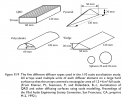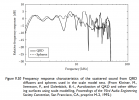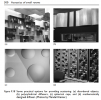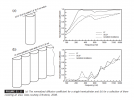I have been edging to add some diffusion to my small room which is set up landscape orientation 4.7 metres front to back and 5.2 metres from side to side. The back has openings on both sides and I really dont have much space to add diffusion as most of the space is taken up by absorbtion. RT60 for the room is between .2 and .5 so decay is decent and have posted a measurement of my room in another post. I know Polycylindrical diffusers are technically old technology and have read all the arguments on Gearspace about it even the concept on the fact that its not a diffuser but the consensus is that it is better than a bare wall. So I'm under impression it might provide some benefit and I know there are better options out there but from a DIY and lack of space perspective it seems like a decent option over a bare wall.
1. One set of instructions mentions that it should be left to vibrate and only be held by its vertical slats that hold it in place. Is this concept correct? What about resonances from the 3mm plywood. Or does that just go with the territory or does bracing it improve its ability to scatter sound?
2. The same set of instructions mentions a height of 15cm is a decent arc for scattering. Does anyone have any idea if a higher arc is better for scattering frequencies. Jen Eklund used to add the parameters in some program on Gearspace but his not around anymore. He was not totally against poly's just thinks there are better options.
3. And if the panel is say on the top front wall which will be fairly out of way of reflections is there any point? Or would a diffuser still serve a purpose in any place as reflections will sooner or later get to that point?
1. One set of instructions mentions that it should be left to vibrate and only be held by its vertical slats that hold it in place. Is this concept correct? What about resonances from the 3mm plywood. Or does that just go with the territory or does bracing it improve its ability to scatter sound?
2. The same set of instructions mentions a height of 15cm is a decent arc for scattering. Does anyone have any idea if a higher arc is better for scattering frequencies. Jen Eklund used to add the parameters in some program on Gearspace but his not around anymore. He was not totally against poly's just thinks there are better options.
3. And if the panel is say on the top front wall which will be fairly out of way of reflections is there any point? Or would a diffuser still serve a purpose in any place as reflections will sooner or later get to that point?




